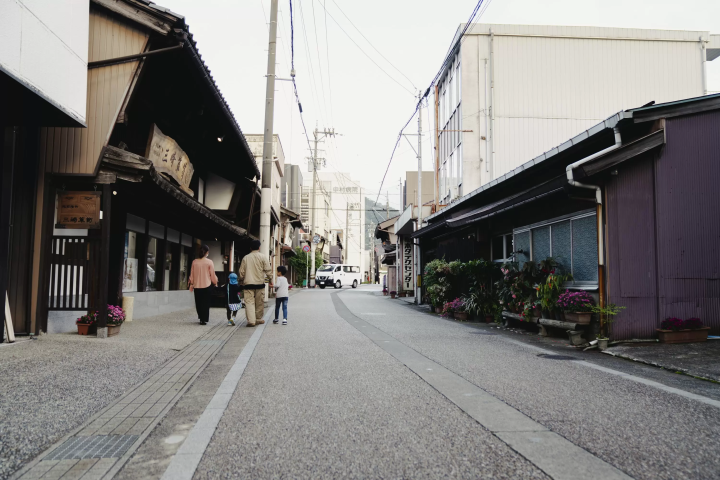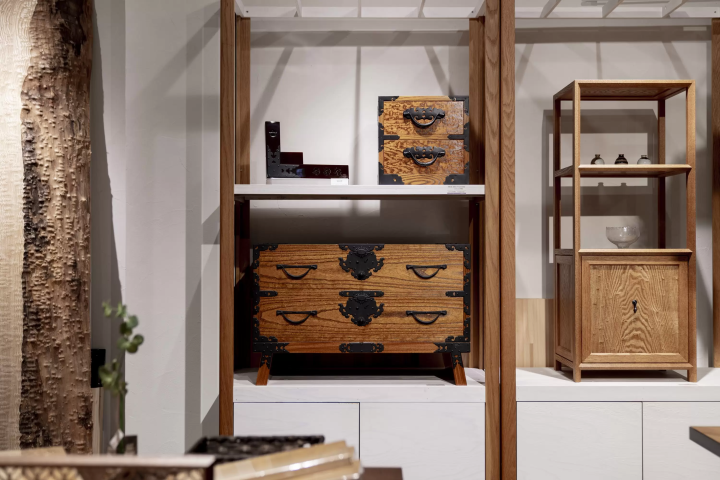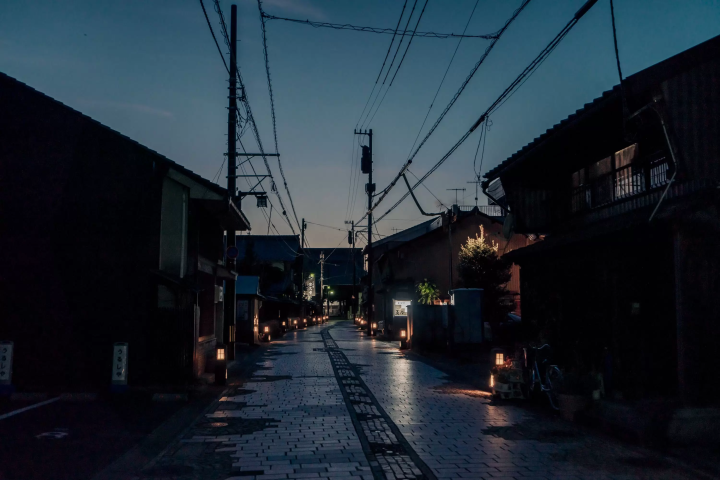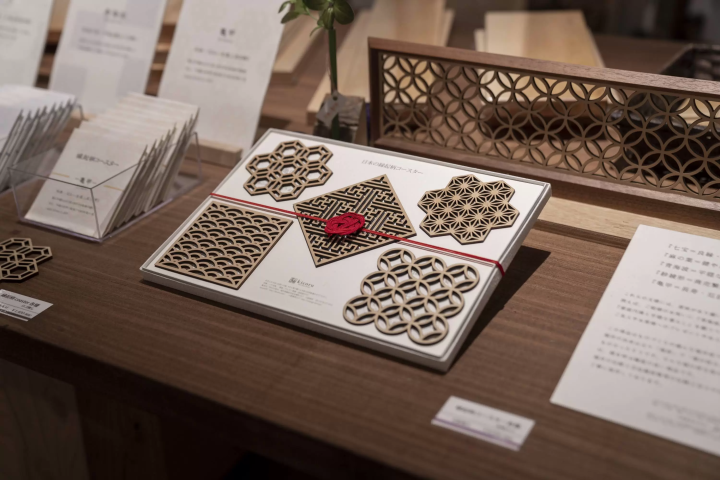"CRAFT TOURISM ECHIZEN" Echizen Sashimono that Creates Harmony with Traditional Techniques

Echizen Sashimono, a collection of Echizen traditional crafts
Development of traditional techniques
"Echizen Sashimono" is typified by chests of drawers and fittings.
Sashimono refers to products such as chests of drawers, fixtures, furnishings, fittings, etc., which are made using techniques such as wooden boards and metal bars that are joined together without the use of nails. Sashimono cannot be made with just one technique, and cannot be created without the integration of various techniques such as woodwork, lacquer, and metalwork.
Echizen Sashimono is said to have started in the late Edo period, but the reason why this Sashimono technique was perfected was that several traditional techniques unique to Echizen, such as cutlery and lacquerware, had developed before then. The fact that Fuchu was the center of Echizen as a provincial capital also triggered the accumulation of these craftsmen, and the quality of Echizen Sashimono was raised to an extremely high level by overlapping several layers.
Kokufu
Fuchu, a town where craftsmen gather
The area around JR Takefu Station in Echizen City is still the center of the town where administrative facilities such as the city hall gather, and is a stronghold for citizens. As the gateway to Koshi no Kuni, a series of great powers, it was a city where people and goods came and went.
In the Nara period, it became more important as a front-line base for the conquest of Emishi, and the 'Kokufu' of Echizen Province was established, becoming the center of Echizen both in name and reality. It is also known that Murasaki Shikibu, the author of "The Tale of Genji," lived in Echizen Province with her father, Fujiwara no Tametoki, when he was appointed as a provincial governor during the Heian period.
During the Northern and Southern Courts, the Muromachi period, and the Sengoku period, Echizen Province was at the mercy of war, but it was protected by the powers of the time because it was a center of craftsmanship. Fuchu Castle was set up on the site of the provincial government, and many lords, including Fuchu Mitsuharu, Sasa Narimasa, and Maeda Toshiie, entered the castle one after another to protect the livelihood of the craftsmen.
Furthermore, it is said that during the Edo period, more and more craftsmen gathered in this area due to the encouragement of industry by Tomimasa Honda, chief retainer of the Matsudaira family of the Fukui domain. In particular, the establishment of stocks for silk makers, weavers, blacksmiths, and liquor makers led to an increase in the number of craftsmen who came and went to the dannashu's homes as production and distribution became more stable.

Echizen chest of drawers
Bringing the spirit of “harmony” that is unique to Japanese people to hospitality

Echizen chest of drawers, which is one of the Echizen cabinets, is made of wood using techniques that do not use nails, such as mortise joints and dovetail joints. It is a Japanese chest of drawers.
Reliable traditional techniques that have been handed down for about 700 to 1500 years, such as Echizen cutlery for the metal fittings such as handles and Echizen lacquerware for lacquering, produced Echizen chests of excellent quality, and in the Meiji era, Mikuni Together with chests of drawers, they were highly evaluated nationwide.

In addition to the chest of drawers for keeping accounts at restaurants, more and more people wanted Echizen chest of drawers as a wedding accessory, and around the middle of the Meiji era, "tansumachi street" was born, lined with workshops and shops of chest craftsmen. In addition, due to the creation of craftsmen's friends, the culture of dinner parties and banquets flourished in the city of Fuchu, and there are still many restaurants and banquet halls in this area.
Mr. Onoya, who is the fifth-generation successor of Kamani Besso, a restaurant founded in 1873, says that he wants to go back to the origins of the restaurant culture.
“Our restaurant, which has existed since the Meiji era, has continued to change its form to suit the times. However, I think now is the time to return to the original form of a restaurant. is a comprehensive facility where you can enjoy all aspects of Japanese culture.There are dishes, kimonos, flower arrangements, tableware, hangings, and of course Echizen Sashimono chests and fittings.This is the only place where you can find all kinds of things. That's because it's Echizen."
Mr. Onoya set up Cha-kaiseki Yoshihide, which serves one guest per guest along the old Bajikaido, in order to make it a center of Japanese restaurant culture while leaving Kamani Besso in the city.
“The good thing about Japanese culture is that it’s not something you force on others, but rather a culture of “guessing.” I would like to pass on the culture of kind hearts that is celebrated through ryotei.”

What has existed in this town for more than 1,500 years is the high level of skill handed down by each craftsman, and the kind temperament of the people who always think of others and those around them. The accumulation of beautiful considerations that harmonize with time and environment may be what makes up Echizen's multi-layered and profound charm. We want you to feel the delicate hearts of the people of this town through Echizen Sashimono, in which many parts are intricately combined and perfectly matched.
▼ Chakaiseki Yoshihide
Echizen wisdom ~Proposing a new tourism, a journey of wisdom.~ A town that has inherited the skills and spirit of its predecessors for 1,500 years. Echizen, the entrance to the "Koshi no Kuni" ruled by an ancient king. A place of wisdom where cutting-edge technology and culture first flowed in from across the Sea of Japan and became the origin of Japan's profound manufacturing. In the traditional industries that coexist with the nature of the land and in the people who live here, the universal wisdom that human beings want to bring to the next 1000 years is alive. Here and now, there is a future born from exchanges that transcend national borders and time and space. A new quest to find light. Welcome to Echizen.
The contents on this page may partially contain automatic translation.





























![[Kanazawa] Enjoy the world of gold leaf to the fullest in the city with the highest production volume in Japan](https://resources.matcha-jp.com/resize/720x2000/2025/11/12-249564.webp)
![[2026] Family Winter Trip to Suzuka Circuit! – For Both Day trips and Overnight Stays!](https://resources.matcha-jp.com/resize/720x2000/2025/12/26-254097.webp)
![[Northern Okinawa] 4 Recommended Cosmos Fields in Okinawa | Sunflowers and Cherry Blossoms in the Same Season!](https://resources.matcha-jp.com/resize/720x2000/2024/08/12-192028.webp)

